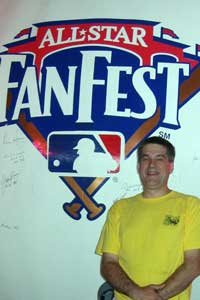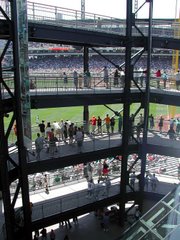
Joshua Morgan Hancock (1978-2007)
The Associated Press
Say it ain't so ...
If there's one redeeming feature of the Evil Empire, it has been manager Joe Torre.
I liked watching Joe toward the end of his playing career, with the Cardinals and Mets in the '70s. I liked watching him take the then-lowly Braves (yes, they once were awful) to the '82 NL West title, and that he later was hired by St. Louis after Ted Turner dumped him.
Then history repeated itself, in a way.
Back in 1949, the Yankees hired a new manager, a man in his late 50s who had spent his entire major-league career to that point in the National League. The new manager went on to win 10 American League pennants and seven World Series in 12 years. His name was Casey Stengel.
Torre, another lifelong National Leaguer, was a few years younger than Stengel had been when the Yankees hired him. But Torre's results have been similar. His teams won the World Series in four of his first five seasons and have won the AL East title in all but one of his first 11.
Despite his stellar record, Stengel lost his Yankees job after one bad stretch: namely, the 1960 World Series, during which New York outscored Pittsburgh 55-27 but still managed to lose, thanks to Bill Mazeroski.
Torre faces a similar situation. A bad stretch to start the 2007 season has the Yankees sitting on a 9-14 record, good for last place in the division.
Pitching is primarily to blame. The staff has been decimated by injuries, and those who still can throw aren't getting the job done. The starting pitchers are averaging fewer than five innings per start, and Buster Olney of ESPN: The Magazine mentioned that four Yankee hurlers are on pace to make 99 or more appearances, and that only one pitcher in history (Mike Marshall, 1974) has pitched in more than 94 games.
Torre might be overworking the staff, but if no one can get the job done, what choice does he have? He can't pitch Andy Pettitte every day.
If the situation doesn't improve soon, Yankees owner George Steinbrenner will be looking for a scapegoat. Torre almost paid the price after New York's early exit from the playoffs last fall, so the team really needed a hot start this year for his sake.
One part of me is happy that the Yankees and their $200 million payroll are playing so miserably (even worse than the Pirates). But if Joe Torre is the resulting casualty, that's a sad day for baseball.














